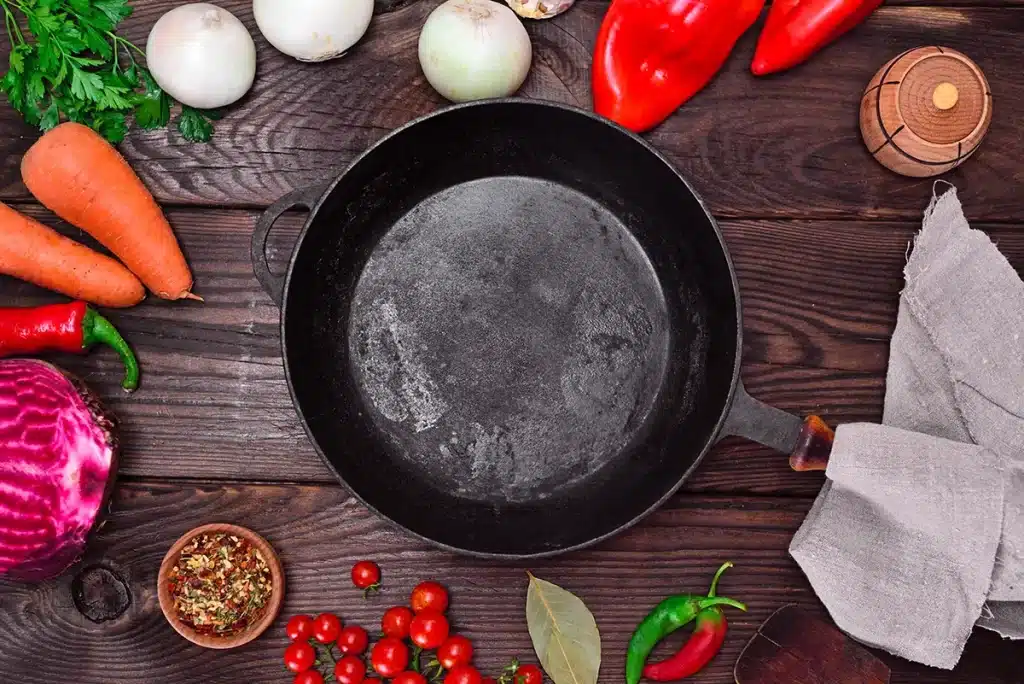Nothing beats the classic. Cast iron skillets and pans have always been popular for their perfect balance of versatility and durability. But beyond these, is it true that it’s a better cooking option too? Is cooking with cast iron healthy at all?
Cooking with cast iron cookware is healthy because it lessens oil usage and adds a bit more iron to your meals. It’s also free from unwanted chemicals that other pots may have, making its popularity skyrocket among women, kids, and people with iron deficiency.
To give you a better idea, let’s dive into the science behind boosting iron content using cast iron.
Quick Navigation
- What Science Says About Boosting Iron Content with Cast Iron
- Health Benefits of Cooking with Cast Iron
- How to Make the Most of Your Cast Iron Cookware
- Conclusion
What Science Says About Boosting Iron Content with Cast Iron

Cooking with cast iron pans slightly boosts iron content by ‘leaching’ it into your food.
In July 1986, researchers tested and confirmed the capability of cast iron to transfer iron to 20 types of food. For instance, one of the results showed that the iron content in applesauce had increased from 0.35mg to 7.3mg after being cooked on a cast iron pan.
This study was later published in the Journal of the American Dietetic Association.
There are several factors that influence how much iron is transferred – moisture, acidity, cooking time, and the pan itself. Foods with high acidity, moisture, and cooking times get higher iron increase compared to others. Meanwhile, using older and frequently used cast iron skillets results in a lower iron transfer.
A Korean study in 2020 also revealed that you’ll need acidic agents to leach off iron from cast iron cookware. In other words, you’ll need to cook acidic foods to actually gain more minerals. Oil is also discouraged in the same study, as it prevents acid from stripping off excess iron from the cookware.
Health Benefits of Cooking with Cast Iron
At this point, we’ve already established that cast iron is an all-rounder. With it, you could whip up tons of recipes of different kinds, enjoy excellent heat-retention capabilities, and create healthier meals altogether.
Here’s a quick round-up of the health benefits of cooking with cast iron:
Adds Extra Iron Content in Meals
In the previous section, several researchers supported the claim that cast iron does transfer iron into your food. But why exactly is this a good thing?
The body works best with just the right amount of iron intake. Iron is responsible for hemoglobin production which distributes oxygen to the different parts of the body. Hence you’ll notice that the more iron-deficient a person is, the more often they feel lethargic or weak.
Although cooking with cast iron cookware is not proven to aid in anemia or iron deficiency treatment, it can add more iron to your meals and improve body function. Most especially, if you cook acidic foods. As long as you’re not diagnosed with an iron overload disease, it’s definitely worth the try!
Less Oil Usage
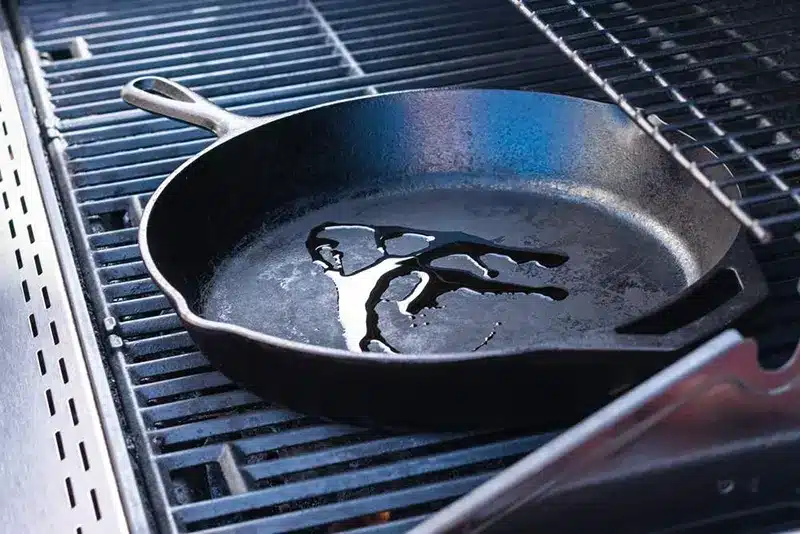
Cast iron pans can be ‘seasoned’ to be nonstick, thus, limiting your oil usage. Cutting off oil lessens calorie intake, helps in weight loss, and prevents plaque build-up around your heart.
Furthermore, unlike other Teflon or ceramic-coated pans, its non-stick capabilities stay excellent even after multiple rounds of seasoning. We’ll explain how to properly season your cast iron cookware in the next section!
Avoid Harmful Chemicals
Last but not the least, cast iron is free from toxic chemicals that are found in many other types of pans, such as Teflon. At high temperatures, these chemicals cause pans and pots to break, decompose, and emit fumes. Examples of these chemicals are perfluorooctanoic acid (PFOA) and polytetrafluoroethylene (PTFE).
PTFE is a safer alternative to PFOA, which the World Health Organization revealed to be a possible cause of cancer.
How to Make the Most of Your Cast Iron Cookware
Just like any other pans, cast iron cookware works wonders when used and cared for properly. However, despite its many advantages, many people think twice about exploring cast iron because of the claims that it makes food taste like iron.
To clear this up, your food will only have more iron flavor if you cook for long periods of time or when you cook acidic ingredients. It could be unpleasant to some, however, this just means that you’ve got more iron in your meals now!
The secret? Know your way around properly using and caring for your cast iron skillets. Not only does this keep your pans in their best state, but it also boosts their health benefits by a mile.
Here are a few tips to cook like a pro with your cast iron pans:
Season Your Cast Iron Pans
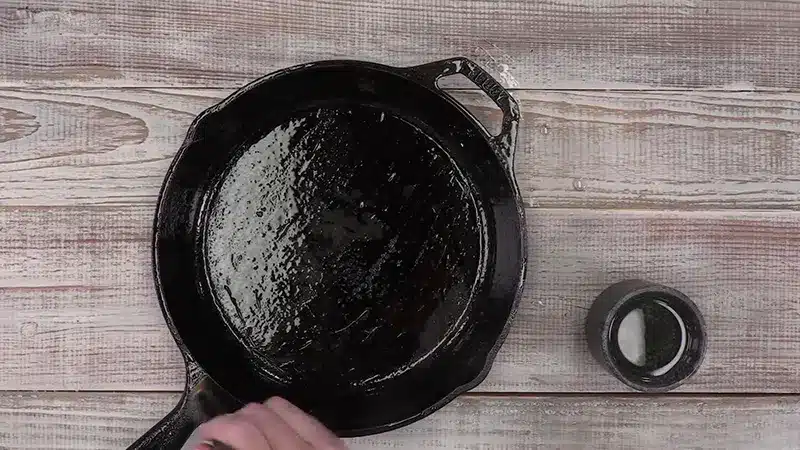
Seasoning your pans makes them non-stick and prevents rust. This allows you to cook sumptuous meals with as little oil as possible which is a great way to improve your diet.
To properly season cast iron, you need to rub a bit of oil all over your pan including the bottom and the handle. Ideally, you should go for standard canola or vegetable oil to avoid unwanted flavor.
Then, dry your pans in a preheated oven at around 450-500°F for about an hour before use. Make sure that you heat up your cookware beyond the oil’s smoke point before taking it out. If you don’t have an oven, then a stovetop burner works just as well.
Don’t forget to re-season your pans every now and then to avoid rusty spots or discoloration. However, do be careful about not over-seasoning your pans. This way, you can keep your pans non-stick and at their best quality for years long.
Cook Iron-Rich Meals in Cast Iron
If you want to add more iron to your diet, then you will want to try cooking already iron-rich ingredients on cast iron. This bumps up its iron levels higher and saves you from having to look for other iron-rich foods. Make the most of what you have!
Examples of food rich in iron are:
- Red meat
- Tofu
- Chickpeas
- Eggs
- Shrimp
- Sweet Potatoes
- Legumes
- Organ meats
Don’t Think Twice About Cooking Acidic Foods
A lot of sources might suggest against cooking acidic ingredients on cast iron, but is that extra iron flavor really that unbearable?
Actually, it’s not as bad as it seems. That small shift in flavor is hardly noticeable, especially in recipes rich in spices. In addition, if you’re willing to go an extra mile for maximum iron intake, then something as mild as this is nothing.
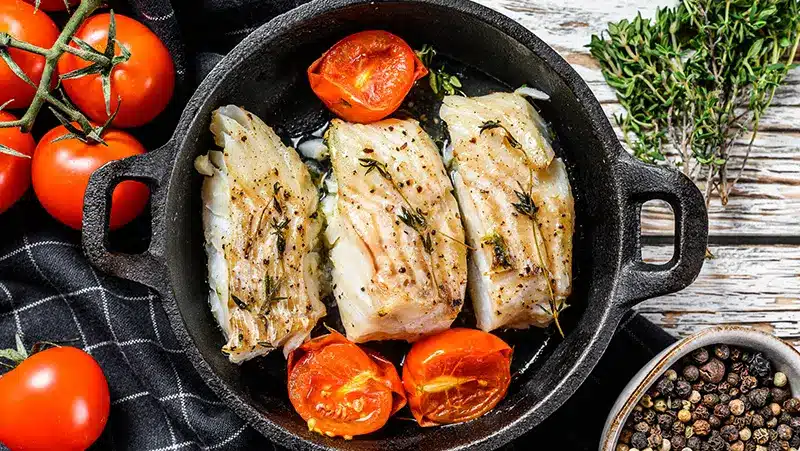
However, you always have the last say in this case. If it certainly isn’t your cup of tea, then you can always opt for acidic ingredients with lower pH levels and avoid cooking for extended time periods. This still gives you that iron boost, without the iron flavor!
Use Your Cast Iron Cookware Frequently
Unlike the previous three, this last tip doesn’t really help bump up the health benefits of cooking with cast iron. However, it does help you become more confident in your culinary skills!
The more you cook using cast iron, the more it gets better. Not only because your meals get a mineral boost, but because frequent use gets you used to its entire cooking and maintenance process. Many people only use their cast iron pots and skillets on occasion, but this puts its entire potential to waste!
Here’s a list of the many awesome things you can do with your cast iron:
- Searing
- Browning
- Baking
- Roasting
- Frying
- Sautéing
- Braising
And so much more. However, we suggest you avoid boiling water or simmering ingredients for extended periods of time using a cast iron pot. The iron flavor is a bit stronger if you do so, and might affect its flavor.
Conclusion
The bottom line is that cooking on cast iron does boost the iron content in food. Hence, it’s a smart way to improve your meal plan and eat healthier altogether. However, you should note that it’s not high enough to significantly aid in treating iron deficiency or anemia.
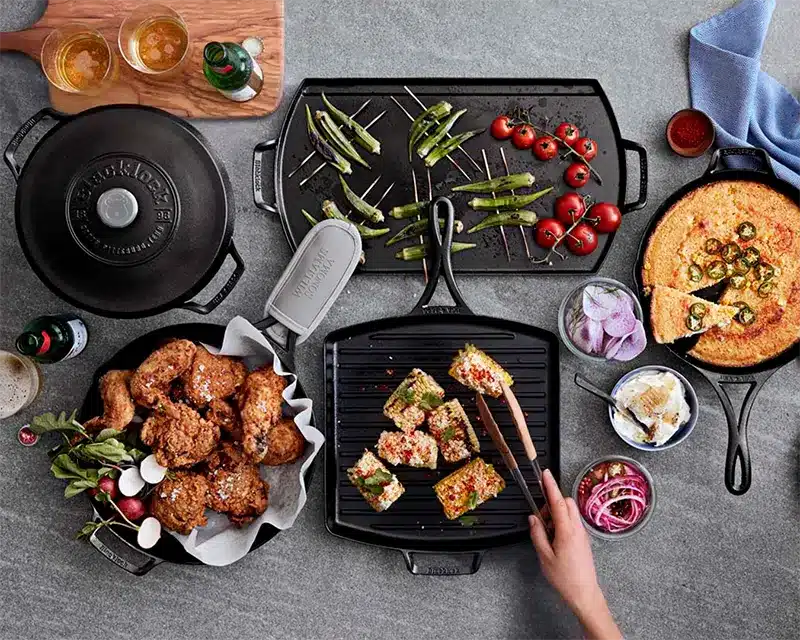
Apart from this, using cast iron also limits oil consumption and is free from toxic chemicals found in Teflon items and other cookware. You might feel a bit skeptical about getting an extra iron taste in your meals, but this is a small thing compared to the number of health benefits it poses.
But of course, to each their own! If you don’t want that iron flavor in your meals, then you can always limit your cooking times and avoid high-pH ingredients. Cook healthy, delicious meals all day!

